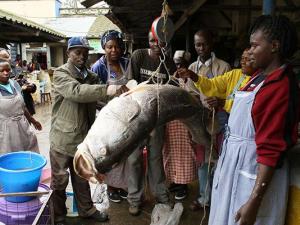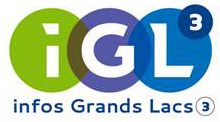
Chinese culinary and sex appetites a boon for East Africa fish exporters
Fish maw, which was once regarded as a waste by-product in East Africa, is slowly becoming a multi-million dollar export, thanks to the growing appetite in Asia.
Uganda, Kenya and Tanzania collectively earn some $86 million per annum from Nile perch maw, which has become a highly sought-after commodity in China, Japan and other Asian countries.
Fish maw is the commercial term for the swim bladders of large fish like the Nile perch. Other fish with similar bladders are catfish, croaker and sturgeon.
They are internal organs filled with gas that helps the fish rise, sink or remain stationary at its preferred depth underwater.
A new study commissioned by the Lake Victoria Fisheries Organisation (LVFO) in collaboration with the Responsible Fisheries Business Chain Project under the German development agency GIZ advises the East African nations to formalise the trade in maw for it to contribute fairly to the well-being of communities living around Lake Victoria.
The study of the processing and trade in the Nile perch in East Africa was done by Food Safety Associates Ltd.
Sea treasures
Dried swim bladder is a delicacy in China, where it ranks number four among sea treasures in the country’s cuisine after clams and oysters, sea cucumber and shark fin. They are also used in the production of aphrodisiacs.
International prices of dry maw range between $450 and $1,000 per kilogramme, depending on the size, quality and market strength.
In 2017, maw worth $40 million was exported from Uganda, which leads in the trade, with 17 regional traders and 20 exporters.
Tanzania, earned over $42 million while Kenya exported maw worth $5.6 million during the year.
Processing factories
Processing companies in the region take the lion’s share of the maw business.
The business has also boosted the earnings of maw traders, middlemen and a few agents trusted by Chinese maw processing and export companies.
In the search for maw to supply to Chinese companies, the agents have covertly created a lucrative artisanal segment.
They have established business linkages cascading from middlemen based in towns to small extractors and itinerant maw collectors based at landing sites and villages.
The benefits from the increased demand for maw as well as from price surges, however, do not trickle fairly down the fish supply chain.
Requirements by factories in Tanzania and Kenya, for example, and a recent directive in Uganda that all fish be supplied with their maw to processing factories, are partly to blame, according to the report.
Authorities in the region consider many actors in the chain to be illegitimate. They have resorted to smuggling maw across borders in a bid to obtain better prices.
While Tanzania has 11 Chinese-manned maw processing factories in Mwanza, the country has only one licensed local trader, who runs centres in Bukoba, Mwanza and Musoma.
The centres collect and export maw to Uganda. Several local traders also work with Ugandans to illegally export maw from Tanzania.
The absence of Chinese buyers in Kisumu, Kenya, strict licensing for regional exporters and the taxation system in Tanzania, as well as a perceived laxity in the regulatory system associated with maw trade in Uganda are being blamed for the smuggling of the product.
The previous arrangement between factories and fish suppliers — where factories would give back their maw to fish suppliers — has now been banned in Uganda. The fish suppliers would then sell the maw to Chinese traders to export to Uganda.
Optimal benefits
To optimise benefits from the trade, the LVFO is advising Kenya, Tanzania and Uganda to recognise maw as a commodity separate from fish.
Governments, development partners and other players should also devise an equal profit-sharing mechanism for the benefits to flow down throughout the value chain, the report notes.
The governments should also develop a regulation requiring fish factories to return maw to fish suppliers if they cannot pay for it, and devise a licensing procedure for all players in the value chain.
The governments should also increase awareness among fishing crew, boat owners, fish suppliers and agents of the value of maw and train them in trading and proper handling of the commodity.
“Governments should assist the private sector to source finances for establishing the right physical and quality infrastructure,” the report notes.
The study advises governments, fisheries associations, quality assurance institutions, maw processing firms, donors and other players to exploit employment opportunities for youth and women in the maw processing and trade.
It further advises governments to support youth and women groups to access proper equipment and infrastructure. The existing infrastructure is too weak to sustain production of world quality maw exports.
The study advises regional and national authorities to develop and enforce policies, regulations and standards to attract investors to establish quality infrastructure for extraction, handling, processing and trading of maw.
“The EAC partner states should through the LVFO strengthen acquisition and management of data by the Nile perch value chain actors and carry out research on the use of maw from other fish species and on maw value added products,” the report notes.
